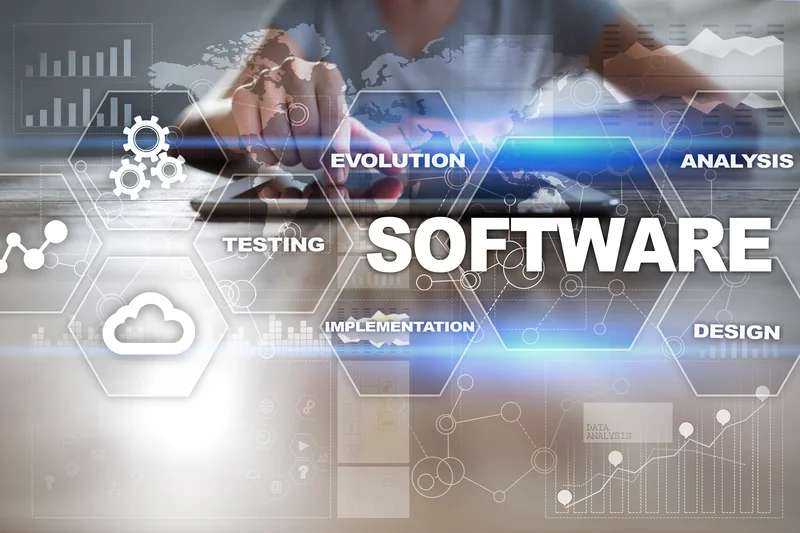On the other hand, the Waterfall model is a linear and sequential method ideal for tasks with fixed necessities. In Waterfall, every phase—from planning and design to improvement and testing—must be absolutely accomplished before shifting to the subsequent, minimizing overlap and ensuring systematic progress. Scrum, on the other hand, is a selected framework that falls under the Agile umbrella. Agile is a broad, flexible methodology for managing projects, significantly in software improvement. Agile’s main focus is on delivering small, working items of the project throughout its lifecycle, with regular adjustments based on consumer wants and feedback.
Should You Use Agile Or Scrum?
As you move up the ladder in product, having an consciousness of how these processes work will set you up for fulfillment in the future. Scrum is a framework within which people can address complicated adaptive issues, whereas productively and creatively delivering merchandise of the very best potential worth. Agile is the project management method and scrum is the method used to implement it. If you want to turn out to be an authorized Scrum Master, checkout Simplilearn’s Agile and Scrum programs, where you will get an immersive expertise on this widely used software program development methodology. The key distinction between Agile and Scrum is that Scrum is a highly profitable methodology for delivering software program to a buyer, whereas Agile is a philosophy about tips on how to ship software to a buyer. The primary underlying Agile methodology precept is to be flexible sufficient to make adjustments as needed.
Disadvantages Of Utilizing Agile
- Scrum is essentially the most generally used Agile methodology, either alone or as a hybrid.
- This methodology suits projects where adjustments are minimal and requirements are secure.
- Agile was born within the 1970s, when the then in style waterfall technique was criticized as being too restrictive for creating software.
- Each strategies purpose to enhance efficiency and accountability, but they achieve this with distinct practices and goals.
- Nicely on this case Middle Earth is the product world, and the Fellowship is a gaggle of 17 software growth practitioners at a ski lodge in Utah.
Success can solely occur when you take a look at scrum as a part of an extended journey towards agility. Different agile ideas concentrate on a bigger picture that must be addressed exterior of transitioning teams to scrum. This includes incorporating agility into product management, HR policies, and management, to call a couple of.
Be Taught how the degree might help you gain the skills you’ll have to further your profession. To study extra about advancing your profession as a project supervisor, together with actionable tips and strategies, download our comprehensive guide below. When OKRs define the place you need to go, and Scrum structures the way you get there, organizations gain a strong dual system for reaching bold goals. Primarily Based on the goal of the sprint (each group may work in path of one widespread outcome on a spring), a dash backlog is created. They agreed that the traditional method of constructing software just wasn’t working, and collectively they came up with a manifesto. Unlock your potential as a Scrum Master and drive your team in course of success.
Put merely, Agile project administration is a project philosophy or framework that takes an iterative approach towards the completion of a project. Agile is a project management philosophy that formally burst onto the scene in 2001 and has gained recognition across industries since. As project management scrumban methodology continues to be an in-demand talent, Agile and Scrum are likely to be fixtures for more firms to come. These measures help identify bottlenecks, scale back waste, and improve effectivity. Kanban metrics could be helpful for teams interested within the steady enchancment of their workflow. Instead of 1 person monitoring the workflow, all employees take ownership of their work to maneuver it across the end line.
The kanban strategy to project planning helps a continuous circulate of labor. Work-in-progress limits ensure that staff members don’t have too many tasks without delay. Naveen is an expert agile coach and has been working independently for an extended time within the Asia Pacific. He works with the software program improvement team and product group to develop awesome merchandise based mostly on empirical processes. Agile is a mindset or way of thinking in software development which focuses on steady improvement and buyer value supply. Agile is a philosophy of profitable software program supply, whereas Scrum is a confirmed methodology for software growth groups to observe.
This method helps enhance project effectivity and ensures that initiatives remain aligned with customer wants. Scrum is a popular framework for implementing Agile rules, often referred to as an Agile methodology subset. It provides a structured environment for cross-functional groups to work collectively, focusing on delivering valuable software program via incremental processes inside a larger framework. While Scrum is a framework under the Agile methodology, it can technically be carried out independently.
Agile’s adaptability supports quicker delivery, frequent testing, and suggestions integration, which finally ends in the next high quality product and more glad customers. It’s broadly used throughout industries that want continuous improvement and adaptability to stay competitive in ever-evolving markets. After every dash, the group conducts a evaluation and retrospective, assessing the work completed and identifying alternatives for improvement. This iterative strategy permits Scrum groups to constantly refine their processes, adapt to changing necessities, and ship high-quality software program that meets customer needs. Agile provides quite a few advantages, including improved flexibility, enhanced collaboration among group members, and increased buyer satisfaction. Its iterative strategy Product Operating Model allows teams to deliver useful increments of the product shortly, enabling sooner suggestions and changes.
Unlike Scrum, Kanban does not require sprints or specific roles, which permits it to adapt to a team’s changing priorities seamlessly. Both methods goal to improve efficiency and accountability, but they achieve this with distinct practices and targets. Scrum is a structured framework throughout the Agile methodology that organizes project work into time-bound sprints, usually lasting two to 4 weeks. Each sprint is a targeted, intense period where the staff works towards completing an outlined set of duties. Scrum emphasizes teamwork, accountability, and iterative progress toward a well-defined aim.
Agile methodology can be utilized to numerous methodologies, making it a flexible strategy for project management. It can be used at the facet of different Agile frameworks, such as Kanban and Excessive Programming, to create a tailor-made project management approach that fits the unique needs of a staff or project. One Other vital difference between Agile and Scrum is their scope of application.
Agile project management has become the de facto commonplace for software program growth and has been embraced by many different industries for its adaptability and give consideration to buyer value. Inside the realm of Agile, Scrum is one of the hottest frameworks, however it’s important to know that Agile and Scrum aren’t synonymous. In this article, we’ll explore the key variations between Agile and Scrum, offering a transparent distinction via a desk and examples. Scrum and Kanban are in style Agile frameworks that streamline workflows, yet they cater to different project sorts and group dynamics. Enter an agile framework like scrum – used to interrupt down complicated tasks into smaller items so teams can continuously deliver value on a more frequent basis. It’s a more collaborative and versatile strategy, so you can reply to your client’s evolving needs and adjustments available in the market.
This methodology has established a number of benefits, similar to delivering high-value options briefly supply cycles, which were in any other case challenging in the standard waterfall approach. We’ll look at subjects like organizational construction, team roles, planning methods, and key ceremonies or conferences. Other Agile methodologies embrace Kanban and Excessive Programming (XP), each offering unique approaches to reaching the identical total targets as Agile. In Agile methodology, software program is delivered regularly for suggestions, whereas in Scrum methodology, software program is delivered after every dash of development. Scrum is an Agile course of geared toward delivering enterprise value in the shortest attainable time, whereas Agile is a steady iteration of development and testing.
Doing so requires an expert understanding of the methodology you finally decide to employ along side other important project administration skills. On the surface, it is easy to see why Agile and Scrum can often be confused, as they each rely on an iterative process, frequent client interplay, and collaborative determination making. You don’t choose between Agile and Scrum because Scrum is a particular implementation of Agile rules. Teams usually adopt Scrum or different Agile frameworks based on their wants, organizational construction, and project requirements. Some groups may choose to make use of a mix of Agile ideas and practices from various frameworks, adapting them to their specific context.
Understanding the strengths and weaknesses of each https://www.globalcloudteam.com/ methodology can help you choose the proper approach in your project. Both Scrum and Kanban have a goal of eliminating waste by way of iterative work techniques. They rely upon process flows, and they’re also both pull techniques, which implies group members are required to complete particular duties earlier than they will decide new ones. It’s essential to notice that the pros and cons can differ depending on the precise project, group, and organization’s context. Selecting between Agile and Scrum should be based mostly on the unique necessities and constraints of the project at hand, as nicely as the preferences and capabilities of the group.
It defines clear roles, obligations, and ceremonies to facilitate communication and accountability amongst staff members. Scrum is especially efficient for complex tasks that benefit from common updates and iterations through time-boxed sprints. If your team is in a position to commit to a defined construction and may work effectively within its framework, Scrum could be the higher option. Finally, the decision ought to be based mostly in your project’s requirements, group size, and the specified stage of construction and suppleness. By involving stakeholders through sprint critiques, Scrum ensures that feedback is gathered repeatedly, permitting groups to regulate their strategy based mostly on real-time enter.


Recent Comments